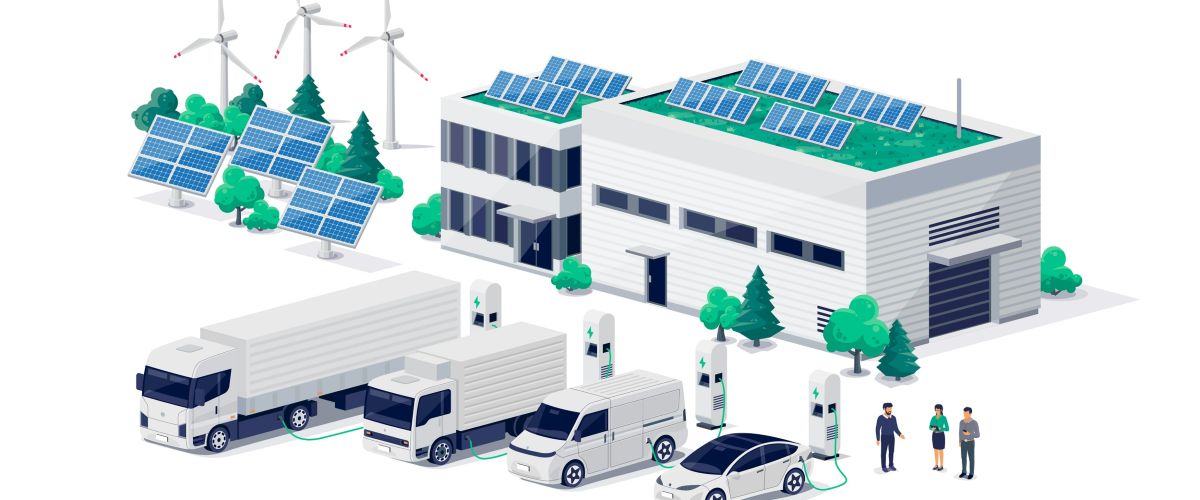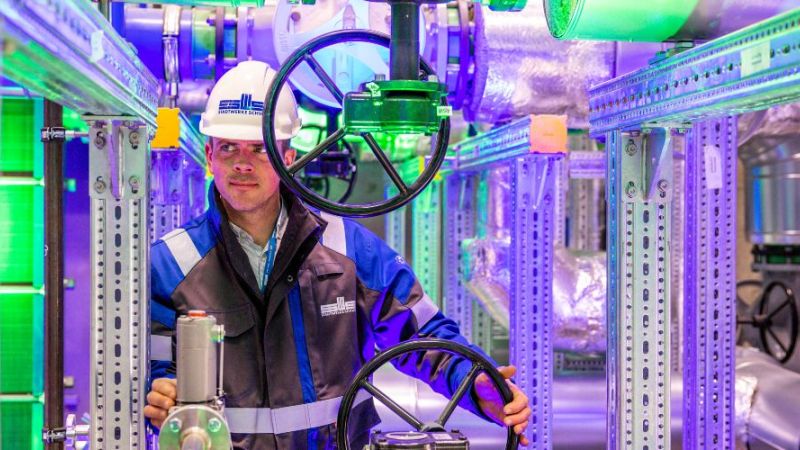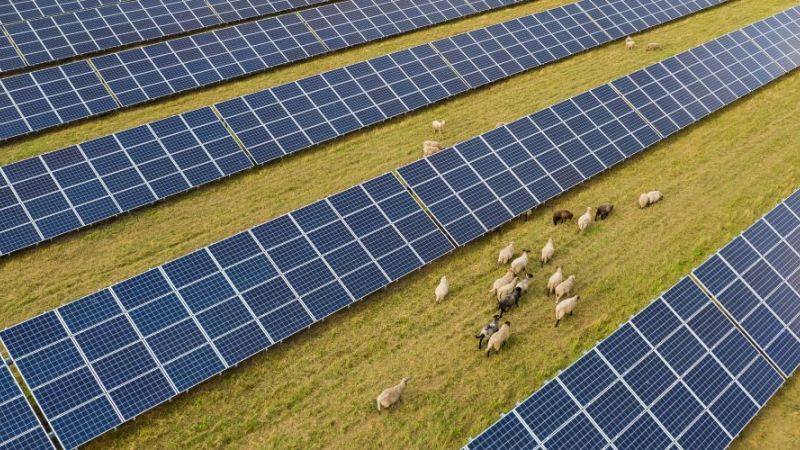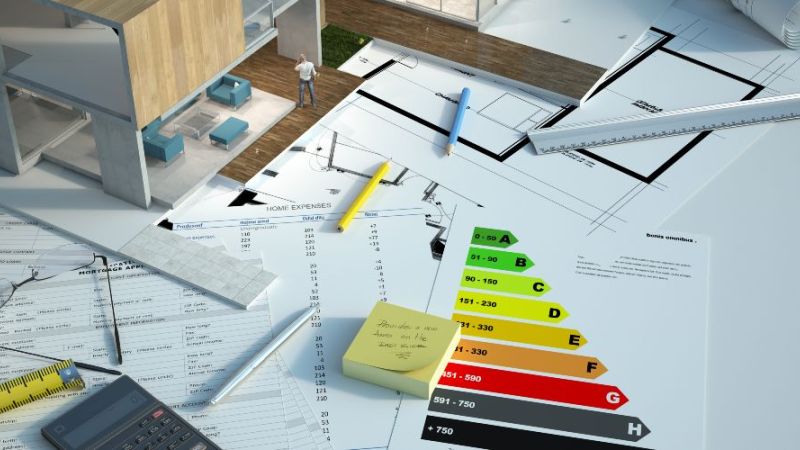Mission Energy System 2045
"We are driving the transition to a climate-neutral, efficient and resilient energy system with innovations."
The more consumer sectors are supplied with electrical energy, the greater the need to utilise every kilowatt-hour of electricity generated from renewable sources even more efficiently and to link the individual sectors. Stable electricity grids and their operation will therefore be of particular importance in the future energy system. Green hydrogen will also play a central role as an energy carrier. Energy research is laying important foundations for all of these solutions and testing the interaction of new technologies in projects through demonstrations or modelling.
In addition, a reliable energy supply is crucial for Germany as a centre for industry and services. In order to guarantee this, a wide range of technologies, energy sources and energy carriers must be utilised. Greater technological sovereignty is therefore a key strategic goal. In order to achieve this, energy research will increasingly focus on these new challenges.
However, research is not only the key to achieving energy policy goals, it also provides the basis for developing political guidelines for the future. This applies in particular to such a complex structure as the energy system. For this reason, the BMWK considers the development of systemic and technological innovations within the energy research programme and rounds off the research with system-analytical and social questions, forecasts and development scenarios.
The future of the German energy system will be characterised by renewable, decentrally generated energy and the combination of the electricity, heating and transport sectors. The transition - away from fossil fuels - is already underway. Sector coupling, flexibilisation, the use of different energy sources and technologies to make the system more resilient, but also a digital infrastructure, energy efficiency and new business models are essential in this future.
In order to achieve climate neutrality by 2045, all possible transformation paths must be considered from different perspectives. As a social project, the energy transition requires broad acceptance and the activation of all stakeholders involved. These in turn require a clear vision, plausible pathways and a clear objective. Research funding therefore also enables projects that provide the orientation and knowledge needed to realise an effective transformation of the energy system.
1.1 Developing and updating a target vision for the energy system in 2045
Energy research provides the scientific basis for consolidating and expanding the necessary political decisions. Comprehensive target scenarios are used to develop and test innovative methods for the links and dependencies in the energy system and to further develop, optimise and validate models. The various technological options and conflicting objectives of the transformation are also taken into account.
1.2 Concretising and evaluating paths to achieving the target energy system
In order to efficiently and safely organise the transition to the goal of climate neutrality, energy research must determine meaningful indicators for monitoring the achievement of the goal. This is because, in addition to the potential of new technologies and the probable time it will take for them to be ready for use, it is also important to have options for changing paths in the event of unexpected social or technical developments.
1.3 Increase opportunities for participation in the future energy system
A high level of participation and involvement is essential for the success of the energy transition. Researchers should use methods from technology assessment, behavioural economics and acceptance studies to implement innovative opportunities for participation.
Electromobility, the electrification of the heat supply and also the planned development of an infrastructure for the hydrogen economy have an impact on the existing infrastructures for electricity, gas and heat. This is where sector coupling comes into play. The consequences of linking the individual sectors must be researched in order to not only ensure but also increase the overall efficiency of the future energy system.
2.1 Further develop methods of cross-sector modelling and planning in a practical manner
To ensure that research results can be used as widely as possible, the database for complex and cross-sectoral system modelling must be expanded and improved. The results should be open and accessible to all with clear, standardised data formats and interfaces in order to make them applicable in practice.
2.2 Implement cross-sectoral testing and validation
Large-scale systemic projects, such as the living labs of the energy transition, make key contributions to the cross-sectoral testing and validation of new technologies and processes. Their scientific support further optimises innovations and their system integration. In this way, confidence in new developments can be strengthened and knowledge transfer can be facilitated in a targeted manner.
2.3 Advancing digitalisation
Wherever the use of Gaia-X makes sense, the energy research funded by the BMWK will support the use of the Gaia-X Trust Framework for use cases and applications in the energy sector. This will make data available through common rules, open standards and interfaces that can be used interoperably between different infrastructure providers with confidence.
In a decentralised energy system, a secure supply of renewable energy must be guaranteed. This also means being less dependent on technology, raw material and energy imports and geopolitical influences. For these reasons, the future energy system must be able to react quickly and reliably to external changes and be more resilient through the use of various technologies and resilience measures. In this way, existing weak points can be identified and eliminated.
3.1 Diversify the energy supply
In order to make the future energy system more resilient, it is important to strategically utilise different energy sources. To this end, research should contribute to evaluating the best options for different energy sources, carriers and storage facilities. Green hydrogen is of particular importance here.
3.2 Identifying and reducing vulnerabilities in the energy system
With the help of scenario and vulnerability analyses, problems in the energy system - during the transition of the energy system and in the target state itself - are to be identified and eliminated. This also includes simulating the effects of possible disruptions in the energy system in order to develop possible solution options through research.
3.3 Reducing dependencies on critical raw materials, strengthening technological sovereignty
Assessing how critical raw materials, components and supplier parts are is a key step in reducing dependencies on critical raw materials. Analyses of suppliers and countries of origin provide valuable information that can be used to derive possible technological options in Germany and the EU. To this end, projects and accompanying measures must also address the aspects of securing skilled labour and the next generation of scientists.
3.4 Develop technologies for crisis prevention, preparedness and management
Energy meteorology and artificial intelligence technologies and processes should also be developed and utilised in research. In this way, critical situations in the energy system can be prevented or the effects of critical conditions mitigated. However, even in the event of a negative incident, technologies must be developed to quickly restore the grid and secure the energy supply.
Alongside efficiency and resilience, sustainability in the future energy system is a key component of a successful energy transition. To this end, research not only looks at energy infrastructures, but also at the resource consumption of all economic assets. To this end, greenhouse gas emissions and the environmental impact of technologies and products over their entire life cycle, as well as the use of recyclable materials, are taken into account in a sustainable energy system. In addition, standards and recommendations from research can help to bring innovative products to market more quickly.
4.1 Advancing the transition from a linear to a circular economy
In order to utilise materials efficiently and sustainably, a circular economy must be implemented from the outset. In particular, raw materials that are in short supply or cause environmental damage must be converted from single-use to reusability. To achieve this, technologies, concepts and business models of the circular economy must be trialled.
4.2 Establishing sustainable production processes
It is not only the direct consumption of goods that has an impact on the sustainable use of energy, but also the energy required for production and disposal. The aim is to use innovative products and suitable manufacturing processes to use less energy-intensive raw materials, replace them with alternatives or recycled raw materials and also make the products last longer. These measures also contribute to the global sustainability goals.
4.3 Base sustainability standards on pre-normative research
In order to maintain Germany's international competitiveness, sustainability standards must be co-designed. Pre-competitive and pre-normative energy research can be used to prepare market-defining standards, which can then be further developed into national, EU and global ISO standards.
The transformation of the energy system should become a locational advantage for Germany, as there are numerous opportunities that will strengthen the business location through newly developed technologies. These technological innovations can be further developed through research funding as part of the energy research programme. One of the major challenges of the energy transition is to keep the costs of new technologies low so that energy remains affordable. Innovations from research also help to reduce costs and provide new impetus.
5.1 Increasing efficiency and reducing costs
New technologies that make energy consumption more flexible should reduce costs. Increased efficiency is achieved through research into automated production and upscaling. More favourable materials and more durable technology will also be used.
5.2 Supporting innovative business models and energy communities
Research projects can support innovative business models and thus identify opportunities for companies. Social innovations, such as energy communities, also contribute to economic transition and social balance within energy research.
5.3 Modelling the energy market
In future, the different types of energy markets can be developed and evaluated using special models. Various approaches - from agent-based to model-based analyses - play an important role here.
Sprinter targets
Sprinter targets are short and medium-term goals to be achieved within a research mission to support the achievement of a climate-neutral and secure energy system by 2045 through energy research.
- Sprinter target 1
Cross-sectoral, integrated energy infrastructure planning will be mastered for all regions of Germany by 2023. Regardless of whether this involves the planning of grids, the generation, consumption or storage of electricity, heat or hydrogen. The conversion of electricity into other substances (Power-to-X) or load control (demand side management) will also be taken into account.






